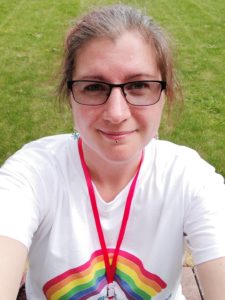By Jenny Crocker, Co-Chair of Riverside’s LGBT staff network Spectrum
Since 1999, Bi Visibility Day has been held on September 23, and is a day to recognise and celebrate bisexuality, bisexual history, community and culture.
Bisexual and bi are umbrella terms used to refer to sexual orientations which express sexual and/or emotional attraction to more than one gender, or regardless of gender. However, many people who do not identify as gay or straight also do not identify as bisexual. Some may choose to identify differently – bi-curious or pansexual or bi-romantic or omnisexual, if they feel more comfortable with those terms.
Research shows that bisexuals are more likely to suffer from mental health problems, domestic violence and homelessness that straight, lesbian or gay peoples.
The Bisexuality Report (2012) found attitudes toward bisexual people are more negative than those toward lesbian or gay people. And 66% of respondents only feel ‘a little’ or ‘not at all’ part of a LGBT community. Some stated they are misread as straight and therefore are assumed to be part of a straight community.
Consider these points, for starters:
- Bisexuals can have relationships with other LGBT people, and non-LGBT people.
- Couples that include one bisexual can be same-sex or mixed-sex.
- Bisexual people might not want to identify as gay.
- Bisexuals can be abused, harassed or bullied for being bisexual separate to homophobia.
Here are some brief tips for bisexual inclusion in our workplace and services:
- Use the words people use to describe themselves.
- Explicitly include biphobia in conversations about homophobia and transphobia.
- Avoid using the term ‘gay’ as an umbrella term for the LGBT community.
- Avoid assumptions.
- Consult staff and customers on their inclusion.
There are some good guides on inclusion available on the MIND website and the Equality Network has produced a Roadmap to Bisexual inclusion
